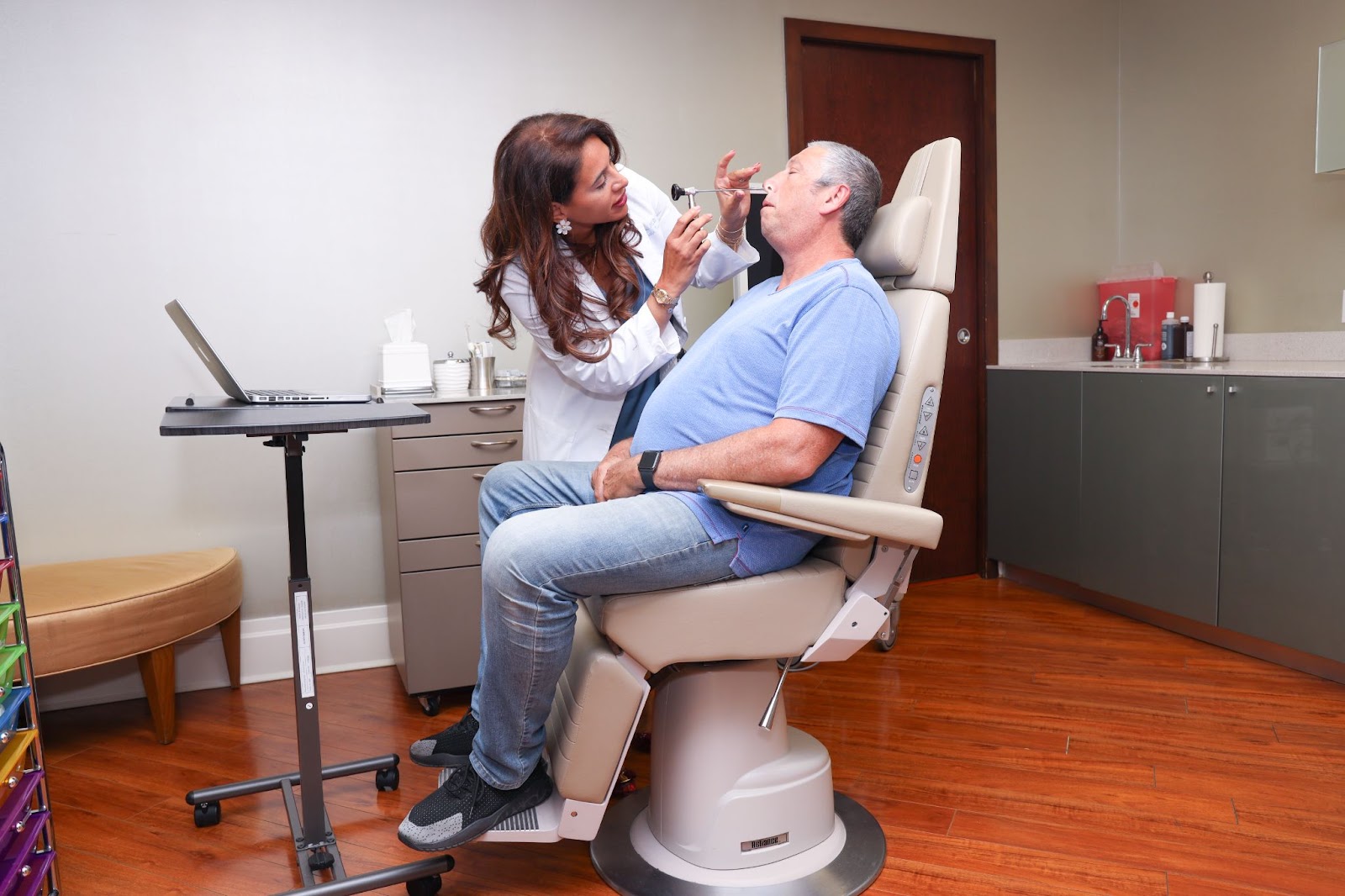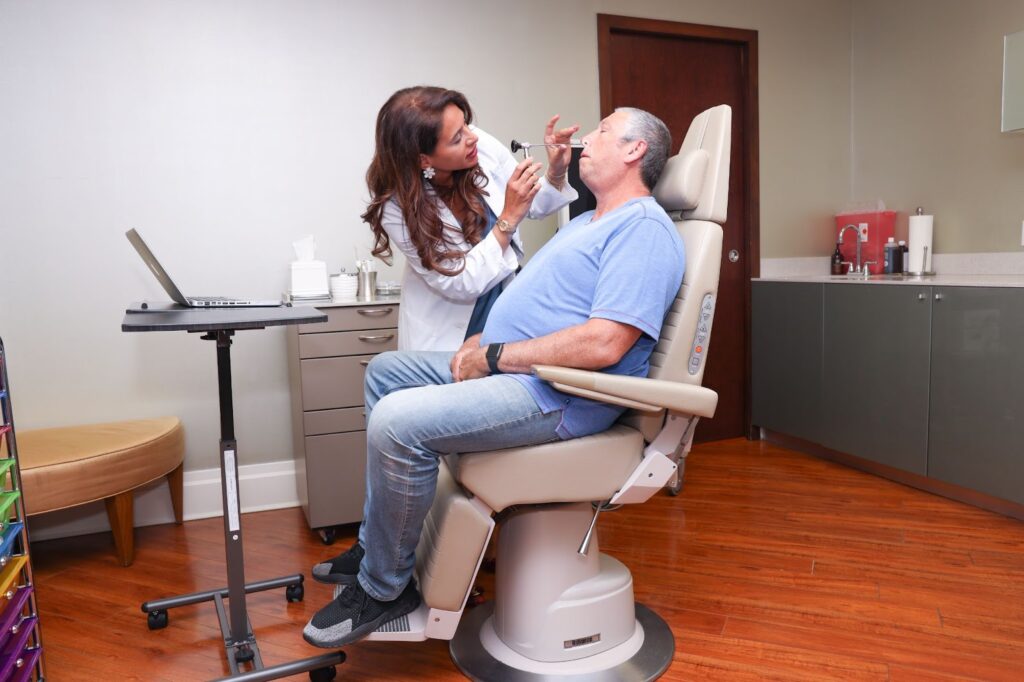Sleep apnea is a highly common disorder that often goes unnoticed or untreated for far too long. More than just a minor annoyance, it can disrupt your sleep, leave you feeling tired during the day, and lead to serious health issues if left to its own devices.
This comprehensive guide will help you understand sleep apnea in detail, including its causes, symptoms, and types. We’ll also discuss the health risks associated with untreated sleep apnea and the various treatment options available, so keep reading to learn how you can find relief for your sleep apnea.
Understanding Sleep Apnea
Sleep apnea is a condition characterized by repeated interruptions in breathing during sleep. These pauses can last a few seconds to a minute and occur hundreds of times each night. The most common type is known as Obstructive Sleep Apnea (OSA), which happens when the muscles in the back of your throat relax, causing a blockage in the upper airway. Other rarer forms include Central Sleep Apnea (CSA) and Complex Sleep Apnea Syndrome (CompSA).
Symptoms can range from loud snoring and daytime fatigue to morning headaches and choking sounds during sleep. It’s not uncommon for individuals with OSA to be unaware of their condition, as they do not fully wake up during these episodes.
Obstructive sleep apnea is not a rare condition. In fact, it affects approximately 18 million adults in the United States alone. Despite its prevalence, it often goes undiagnosed and untreated, leading to a host of potential health problems.
Underlying Causes
Several factors can contribute to the development of sleep apnea. These include obesity, a large neck circumference, a narrowed airway, chronic nasal congestion, and certain medical conditions such as diabetes and heart disorders. Lifestyle factors such as smoking and alcohol consumption can also increase the risk of OSA.
Risks of Untreated Sleep Apnea
The risks associated with untreated OSA extend far beyond a poor night’s sleep. Persistent low oxygen levels in the blood force the body to work harder to pump blood, leading to one of the most unrecognized causes of silent hypertension. Over time, this can lead to uncontrolled weight gain, heart disease, gastroesophageal reflux disease (GERD), diabetes, and depression.
Moreover, this condition can also significantly impact a person’s quality of life. Daytime fatigue can lead to decreased productivity at work, impaired memory, and an increased risk of accidents. It can also strain relationships, as the loud snoring associated with OSA can disrupt the sleep of others in the household.
Non-Surgical Treatments
When it comes to treating OSA, the first line of defense is often non-surgical treatments. The most widely used and influential of these is Continuous Positive Airway Pressure (CPAP), which involves wearing a mask over your nose and/or mouth. At the same time, you sleep to deliver a continuous flow of air that keeps your airways open.
However, CPAP machines can be cumbersome and noisy, leading to low compliance rates. An oral appliance may be an alternative for those who find CPAP intolerable. These custom-fitted devices help hold the tongue or support the jaw in a forward position during sleep, reducing the likelihood of airway collapse.
In addition to these treatments, lifestyle changes can also play a crucial role in managing sleep apnea. These lifestyle changes include losing weight, quitting smoking, reducing alcohol consumption, and adopting a regular sleep schedule.
Surgical Treatments
When non-surgical treatments fail or are not tolerated, it may be time to consider surgical intervention. Various surgical options are available, each targeting different areas of the upper airway. These include uvulopalatopharyngoplasty (UPPP), hyoid myotomy and suspension, advancement genioplasty, maxillo-mandibular advancement, tonsillectomy, tracheostomy, hypoglossal nerve stimulation, hypopharyngeal surgery, soft-palate implant surgery, and nasal surgical procedures.
The decision to proceed with any form of surgery is not taken lightly. It requires a comprehensive evaluation of the patient’s health status, the severity of their OSA, and their response to non-surgical treatments.
Dr. Tadros’s Approach to Sleep Apnea Treatment
At the Center for Sinus, Sleep & Facial Plastic Surgery, Dr. Monica Tadros offers a unique and innovative approach to treating sleep apnea. As a double board-certified plastic surgeon specializing in sinus, sleep, and facial plastic surgery, Dr. Tadros combines her extensive experience with meticulous attention to detail to provide the most advanced upper airway surgery options.
Whether it’s nasal surgeries, palatal surgeries, or tongue-based surgeries, Dr. Tadros tailors each treatment plan to the individual patient, considering the severity of their sleep apnea and their unique anatomical considerations. Her commitment to excellence and patient-centered care has earned her a respected reputation in New Jersey and beyond.
Find Relief & Sleep Easier
Sleep apnea is more than just a sleep disorder. It’s a severe health condition that requires prompt and effective treatment. If you or a loved one are experiencing symptoms of OSA, don’t wait – reach out to Dr. Monica Tadros today for a consultation.



